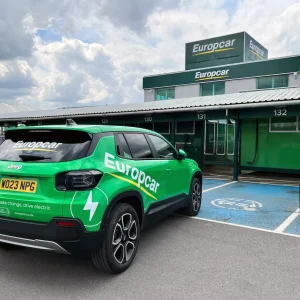
Subscription companies would have you believe everyone wants a one-month lease. They don’t, and if that were the case, then the rental sector would be a lot bigger.
Old-school contract hire is alive and well – leasing companies, as we know them, would not exist if it weren’t – but the traditional three-year/60,000-mile company car is competing with an increasing number of short and medium-term packages, some from within big firms’ own ranks, and they are said to be proving popular.
In December 2022, Arval’s mid-term rental product, Arval Flex, which offers vehicles on flexible contracts up to 24 months, had grown by more than 50% in a year to 3,800 vehicles. Consultant Ben Edwards explains that much of the demand was due to a lack of available vehicles from the usual sources.
“Short-term leases were terrible,” he says, “it was very hard to get hold of one from the rental companies, purely because of the shortages. They couldn’t get vehicles and they were running older ones. so fleets were then a bit more open to short-to-medium hire.”
Auto Trader’s outgoing TCO manager, Mark Jowsey, agrees that the trend was likely being driven by supply shortages: “I think some of the growth may be that, frankly, people had chosen cars that were not available and had been pushed into extended lead times. I know a number of people who’ve had [electric vehicles] on order and their companies have had to arrange alternative products, and I would imagine that the majority of those would have been on just this sort of scheme.”
The Arval Flex fleet reached circa 4,100 in the middle of this year, so growth has continued but at a slower pace. Edwards explains what types of vehicles are offered and who they suit.
“They are all business spec, so they are not your common-garden, low-spec batch vehicle. They are all satnav, full-parking sensors – ideal for a fleet manager to be able to drop in as a temporary vehicle.
“If you’ve got new starters and you need a car, you want them in a proper car, not something you’ve got to chop and change every couple of weeks, and you don’t want to be getting chased for mileage updates [as with short-term rental]. if you took it out for, say, a three-month lease and then decided to keep it for nine months, that’s fine. We just amend the contracts for you, and it runs like a contract hire.”
Relative newcomer Sogo specialises in short and medium-term flexible leasing. It was established by industry veterans Karl Howkins and Mark Lavery in 2020 and, according to MD Howkins, the average age of its fleet is 442 days – about 14.5 months. He says cars typically come back around the nine-month mark, while vans hang around a bit longer, mainly because they are fitted out with the likes of signage and racking.
He thinks the demand for leases of this type and length comes down to three elements: “One, people always want the latest cars and technology and, as we all know, technology is changing so fast on cars now, particularly on BEVs.
“Two, they don’t want to get into maintenance because they are kind of perplexed about the add-ons that the lease companies tend to put on at the end of contracts.
“Three, you can’t put a price on flexibility in this bonkers world we live in at the minute. Nobody really knows how many people are going to work from home or if they’re scaling up or down. so there’s a massive demand for it.”
Flexible contracts also work in a ‘try-before-you-buy’ capacity, particularly for electric vehicles (EVs), for which they are often considered a good form of non-committal exposure.
“Flex was definitely promoted as an opportunity to appraise EVs and establish if it was fit for purpose and for whom it actually works, but then we got to a situation where demand was outstripping supply anyway,” says Jowsey.
“If we can get them into a lease for, say, three or six months, to actually give it a try. then you can pass it around different depots, different entities, different drivers, and it just gives everybody that kind of softer exposure to it, which really works,” adds Edwards, who claims almost all of Arval’s electric vans trialled in this way have remained
with its fleet customers, which have then ordered more.
“They’re actually getting a real use case out of it without having to commit to a vehicle for three or four years,” he continues, “if it doesn’t work for them, they can hand it back and there’s no penalty.”
For all the interest in short and medium-term leases, they still represent a tiny percentage of the overall fleet parc. Arval’s figure of 4,100 makes up 2.2% of the 187,000 vehicles on its books and, according to Edwards, there is a countermove towards longer leases at the other end of the spectrum.
“Fleet leasing is generally, at the moment, moving up to 48 months,” he explains, “we went through a stage where everything was coming back into a three-year lease to try and get that [electric] technology into the fleet and reduce CO2, but fleets are now seeing that they can extend that back up to four years for cars, because the technology is here. The cars are not going to get much greener than they are now, especially with electric, [and] fleets are reducing their mileages.”
He suggests the trend for longer contract hire is a simple cost consideration: a four-year term is cheaper than three, and it is made more feasible by lower post-pandemic mileage.
“If you put yourself into an EV now, or even a modern petrol/diesel, they are fit for purpose. You can run one of those and the mileage is reduced so you’re probably looking at four years, 60,000-80,000 miles. those cars are well capable of that, and some of them will only ever see a couple of services as well.”
It is contrary to common argument that maintenance costs start to increase after the three-year mark, but chimes with the AFP’s comments in June that van operators were discovering replacement cycles could be stretched up to eight years without too much trouble, as long as the fleet is “really good” at SMR management.
Edwards concedes that SMR costs will increase when vehicles are run for longer periods but claims the reduced price of the rental can offset the rise in maintenance expenses later in the contract.
“Yes, your service bills go up, because you’ve got an MOT in there,” he says. “At the back end of life in the fourth year, you start to get a few more bits go wrong, so your maintenance does step up slightly, but the finance side of it drops. When you look at that, and the VAT elements, the overall affect is reduction, so it’s a good way for a fleet trying to manage their costs in a marketplace where prices have already gone up.”
Edwards suggests the extension to four years can also allow fleets to broaden choice lists without increasing their budget.
“We can kind of soften that blow to maintain a decent choice of vehicles,” he explains, “a lot of fleets, at the moment, are using that as a way of not increasing their car allowances. Hit them with the car allowance that you had at three years, push it out to four, and absorb those savings to bolster the choice list for drivers. With everything going up, it’s a good way of not having to go and seek that approval to increase your allowances. Just change your duration, and drivers are more than happy with it.”
It is common knowledge that the fleet and leasing industry has been forced to hang onto vehicles for longer since the pandemic, and data specialist epyx has put some numbers to it. The average age of cars and vans operated by leasing companies using its 1link Service Network platform when they underwent a service, maintenance or repair action rose by eight months (cars) to 2.83 years and five months (vans) to 3.14 years.
“More effort today is being placed on keeping vehicles on the road in a safe and efficient condition while containing costs, which tend to rise with age,” says epyx chief commercial officer Tim Meadows. “There is a considerable emphasis on minimising downtime by, for example, carrying out MOT test pre-checks to minimise the chances of failure and maximise vehicle availability.
“Also, more fleets are having to regularly handle the replacement of major components that would not have happened under pre-pandemic replacement cycles.
“Again, the matter of whether this is the new normal or there will be a return to shorter fleet cycles is very much debatable but until vehicle supply improves substantially, that is likely to be an academic question and we are likely to see an ongoing ageing of the fleet.”





